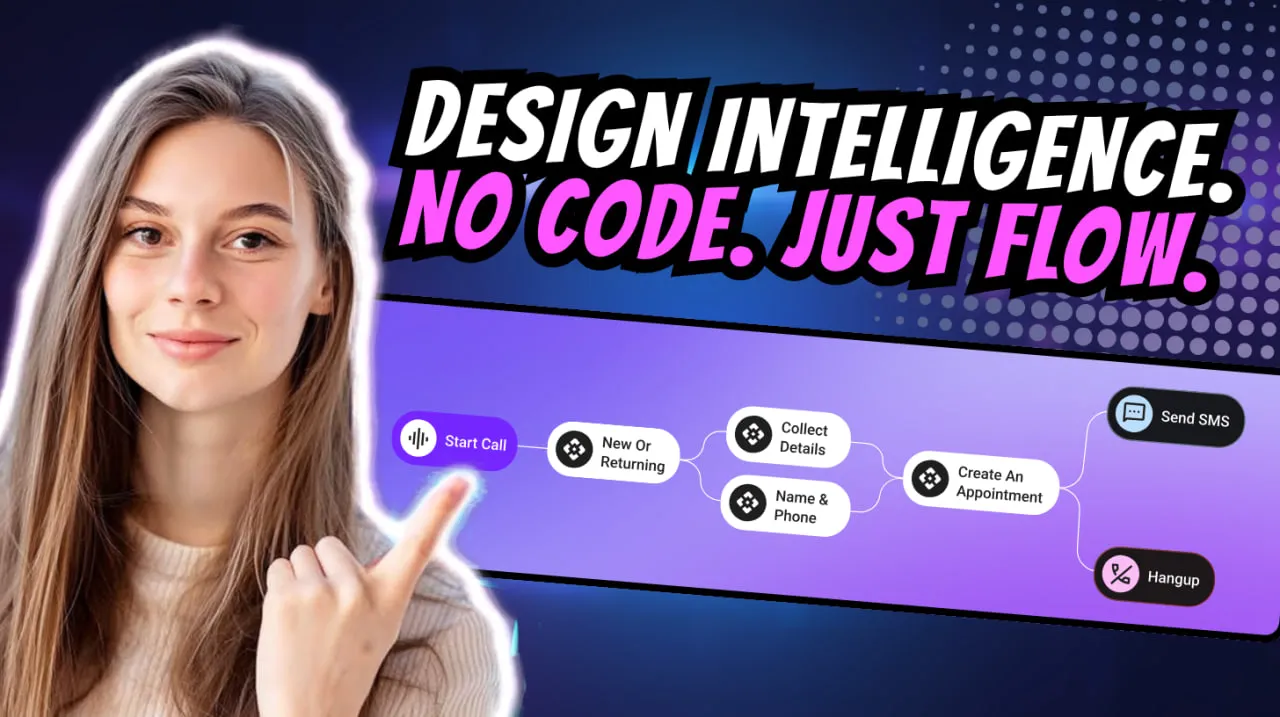We’re excited to dive into a detailed walkthrough of Monobot Flows — the no-code automation engine inside the Monobot CX platform that empowers businesses to build intelligent voice and chat agents with custom workflows. (Watch the original webinar here: Monobot Flows Explained YouTube)
What are Monobot Flows?
Monobot Flows are visual workflow builders that allow you to map out conversation logic, trigger actions, integrate external systems and automate outcomes — all without writing a line of code.
With Flows you can:
- Define triggers (incoming chat, voice call, SMS)
- Set conditions (“if/else” logic)
- Route to different paths (send email, create ticket, transfer call)
- Integrate with CRM, databases or external APIs
- End the conversation or escalate to a human agent
Why they matter for any business
Building agents is one thing — making them powerful and business-aware is quite another. Monobot Flows turn your agent from a reactive responder into a proactive workflow engine.
Here’s how:
- Speed & scalability: Create and deploy new workflows in minutes, add new use-cases without heavy IT overhead.
- Consistency & accuracy: Logic flows ensure the same steps happen every time, reducing errors and manual handoffs.
- Business integration: Agents don’t just chat — they act. They pull or push data, trigger actions, update systems.
- Cross-industry flexibility: Whether it’s logistics, customer support, brokerage, or e-commerce — Flows adapt to your processes.
How to get started with Monobot Flows
Here’s a step-by-step approach drawn from the webinar:
- Log into Monobot CX → navigate to the Automation Flows section.
- Choose a trigger: e.g., an incoming chat message “What is my order status?”.
- Build the steps: ask clarifying questions, check database for order number, decide next step.
- Link actions: route to CRM, send SMS update or transfer to live agent if needed.
- Set conditions: if order delayed → send apology + voucher; else → send confirmation.
- Connect integrations: CRM, ERP, helpdesk or any REST-API endpoint.
- Finalise and publish: test your flow, monitor performance and iterate.
Real-world examples
- Logistics company: Incoming call “Where is my shipment?” → Flow checks tracking system → returns status automatically or transfers to live rep if exception.
- Brokerage firm: Chat “What’s the duty on my shipment?” → Flow triggers calculation logic, retrieves HS-code, returns estimate or schedules live consultation.
- SaaS support desk: New ticket in chat “I can’t login” → Flow asks for account ID, verifies through API, sends password reset link automatically and closes or escalates if still unresolved.
Pro tips for designing effective Flows
- Keep branching logic simple: excessive if/else makes maintenance hard.
- Monitor analytics: use Monobot dashboard to track how many interactions follow the Flow, time to resolution, escalation rate.
- Update frequently: business rules evolve — your Flows must too.
- Use templates: Monobot offers pre-built templates for common industries — adapt these rather than starting from scratch.
- Design for human-handoff: ensure there’s a clear path from automation to human agent when needed.
The bottom line
Monobot Flows transform Monobot CX from a conversational platform into a true digital workforce — automating voice, chat and SMS workflows that span multiple systems and deliver real business outcomes. For companies seeking efficiency, scale and smart automation, this is a game-changer.
If you’re ready to build your next generation of AI agents — book a demo and see Flows in action: Book a personal demo

